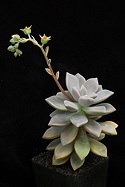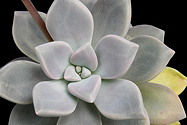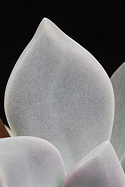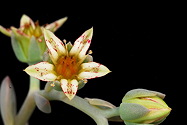(Revised 2023 per correction below)
Graptopetalum paraguayense is a bit of a mystery. It almost certainly does not originate from Paraguay, more likely being Mexican in origin. Its closest relative in nature may be what Kimnach described as Graptopetalum paraguayense subsp. bernalense (ISI 1660). The type subspecies has been the parent of many durable and attractive echeveria-like hybrids and may itself be of hybrid origin. Graptopetalum ‘Snow White’ closely resembles the type subspecies but has plumper leaves of a pale, pearlescent luster and just a hint of faceting. The flowers are yellower with minimal red flecking characteristic of Graptopetalum. The Sedum parent may be something like S. treleasei which could impart the faceting. We offer rooted cuttings of HBG 126384, a plant received from Jerry Barad. $10.
Will the real ×Graptosedum ‘Ghosty’ please rise up! Due to a confusion over flower characteristics, ISI 2022-28 was distributed under the wrong name. Many thanks to Margrit Bischofberger of the International Crassulaceae Network for bringing this to my attention. The correct identity for ISI 2022-28 is Graptopetalum ‘Snow White’ (also known by the French ‘Blanche Neige’). The flowers are typical of Graptopetalum, white with red flecking. This is in keeping with the fact that it is a hybrid of two species of that genus, Graptopetalum amethystinum × G. paraguayense subsp. paraguayense. It is distinguished by its very thick leaves 5.3 cm (2 in) long, 2.1 cm (3/4 in) wide and 0.9 cm (3/8 in) thick. The leaves are very white pruinose, inspiring the cultivar name ‘Snow White’, and have a hint of faceting on the upper surface. The real ‘Ghosty’ is offered as ISI 2023-21 and ‘Snow White’ is here rescued and exorcised of the ‘Ghosty’ that has haunted it for the last year.
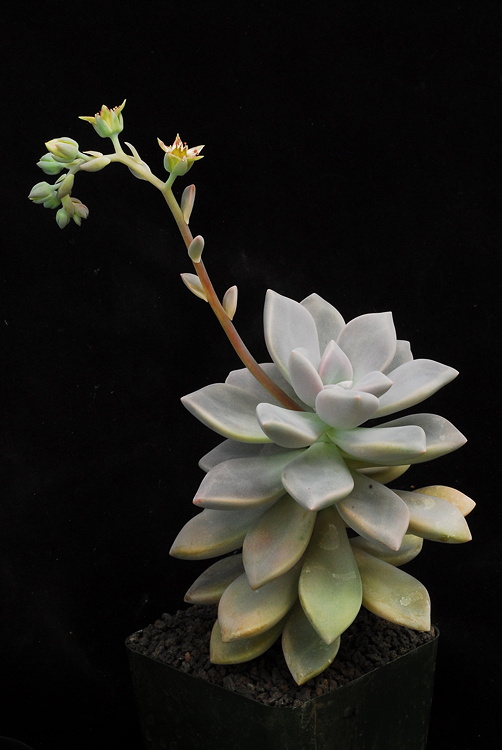
Published in the Cactus and Succulent Journal, Vol. 94 (2), Summer 2022
